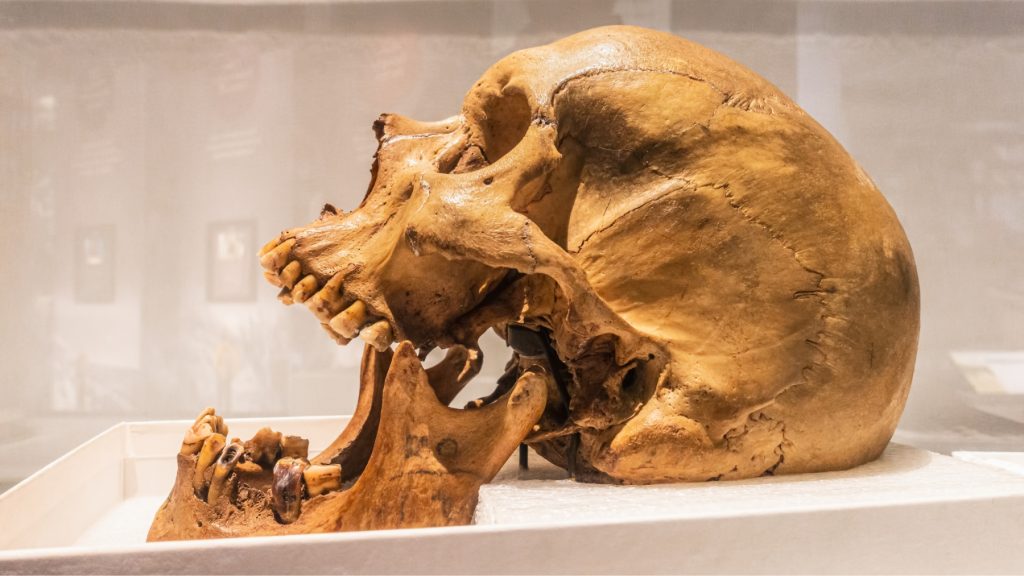
Scientists at UPenn’s Machine Biology Group have used an AI model to bring back molecules with antibiotic properties from extinct organisms.
- Overuse of antibiotics and negligent practices have led to antibiotic resistance in bacteria.
- Pharmaceutical research for new antibiotics is time-consuming and costly.
- The use of AI in antibiotic discovery offers hope in accelerating the process and transforming the industry.
Another win for our scientists! Scientists at the University of Pennsylvania’s (UPenn) Machine Biology Group have utilized an AI model to resurrect molecules with antibiotic properties found in extinct organisms, including Neanderthals and Denisovans.
The research paves the way for “molecular de-extinction” and holds great promise for drug discovery in the face of the current antibiotic crisis.
Can you guess why we have an urgent need for new antibiotics?
Never mind, I’ll tell you.
Most people have this fun little quirk where they take antibiotics for EVERYTHING. Slight fever? Antibiotics. Coronavirus? Antibiotics. The dog ate his fur? ANTIBIOTICS. News flash, people! Antibiotics are solely for fighting bacterial infections! Poor infection control practices, negligent antibiotic use, and the consistent dismissal of warnings against the overuse of antibiotics have led certain strains of bacteria to develop antibiotic resistance. Take Neisseria gonorrhoeae, for example. Yes, the bacterium responsible for gonorrhea, the sexually transmitted disease. It was once easily treatable with penicillin but has become increasingly resistant in recent years. This type is now known as multidrug-resistant gonorrhea (MDR-gonorrhea). Ain’t that a kick in the head?
The obvious solution here would be to have Big Pharma develop better antibiotics, right? Well, it’s not that easy. One, it’s Big Pharma. The carrot is not big enough. Two, pharmaceutical research is lengthy. And the lengthier it is, the more expensive it gets. It actually took 4 years to develop streptomycin. And that’s the shortest time interval for any antibiotic development. As a result, the use of an AI model in antibiotic discovery offers a glimmer of hope by accelerating the process and potentially revolutionizing the industry.
In a stroke of genius, the UPenn researchers began gathering sequenced genome data from Neanderthals (extinct 40,000 years ago) and Denisovans (extinct around 15,000-30,000 years ago). And to give credit where credit is due, paleontologists who studied ancient DNA from bones and artifacts made such precious data available.
The team then employed an AI model to predict which molecules could serve as effective antibiotics for modern humans. After identifying the strongest candidates, the scientists synthesized these molecules in the lab and conducted tests on infected mice. The results, published in Cell Host & Microbe, revealed that some of the molecules were successful in combating bacterial infections.
The AI model developed by the University of Pennsylvania research team focused on identifying antimicrobial peptides encoded in the Neanderthal and Denisovan genomes. And while some of the predicted peptides showed efficacy in killing bacteria, further improvements are needed to optimize their potency and avoid the development of resistance.
Molecular de-extinction is considered a creative and innovative approach, as it helps overcome existing obstacles in drug discovery. The technique is expected to complement other efforts in antibiotic discovery and lead to the development of novel antibacterial therapies. By resurrecting ancient peptides, scientists can explore a larger pool of possibilities and potentially discover new antimicrobial agents.
Inside Telecom provides you with an extensive list of content covering all aspects of the Tech industry. Keep an eye on our Medtech section to stay informed and updated with our daily articles.